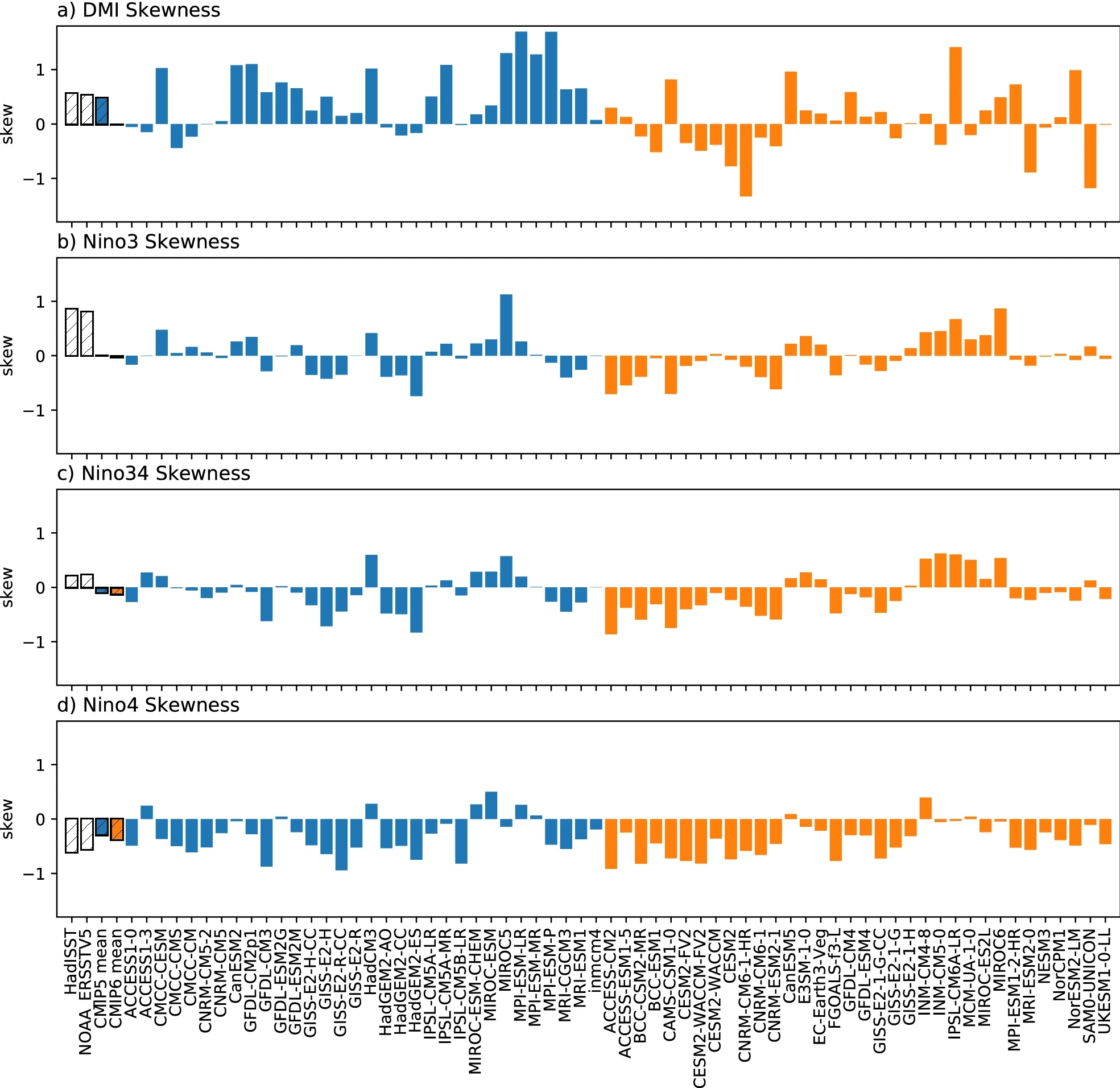Indian Ocean Dipole in CMIP5 and CMIP6: characteristics, biases, and links to ENSO
Sebastian McKenna, Agus Santoso, Alexander Sen Gupta, Andréa S. Taschetto & Wenju Cai
Published in Scientific Reports, 13 July 2020
Accurately representing the Indian Ocean Dipole (IOD) is crucial for reliable climate predictions and future projections. However, El Niño-Southern Oscillation (ENSO) and IOD interact, making it necessary to evaluate ENSO and IOD simultaneously. Using the historical simulation from 32 fifth phase of Coupled Model Intercomparison Project (CMIP5) models and 34 CMIP6 models, here we find that there are some modest changes in the basic characteristics of the IOD and ENSO from CMIP5 to CMIP6. Firstly, there is a slight shift in the seasonality of IOD toward an earlier peak in September in CMIP6, from November in CMIP5. Secondly, inter-model spread in the frequency of ENSO and the IOD has reduced in CMIP6 relative to CMIP5. ENSO asymmetry is still underestimated in CMIP6, based on the skewness of the Niño3 index, while the IOD skewness has degraded from CMIP5. Finally, mean state SST biases impact on the strength of the IOD; the Pacific cold tongue mean state is important in CMIP5, but in CMIP6 the Pacific warm pool mean state is more important.

Fig.4 Bar chart showing skewness in (a) DMI, (b) Niño3, (c) Niño3.4 and (d) Niño4 for observations (striped), multimodel mean CMIP5 (blue striped), multimodel mean CMIP6 (orange striped), individual CMIP5 (blue) and CMIP6 (orange) models.
McKenna, S., Santoso, A., Gupta, A.S. et al. Indian Ocean Dipole in CMIP5 and CMIP6: characteristics, biases, and links to ENSO. Sci Rep 10, 11500 (2020). https://doi.org/10.1038/s41598-020-68268-9.